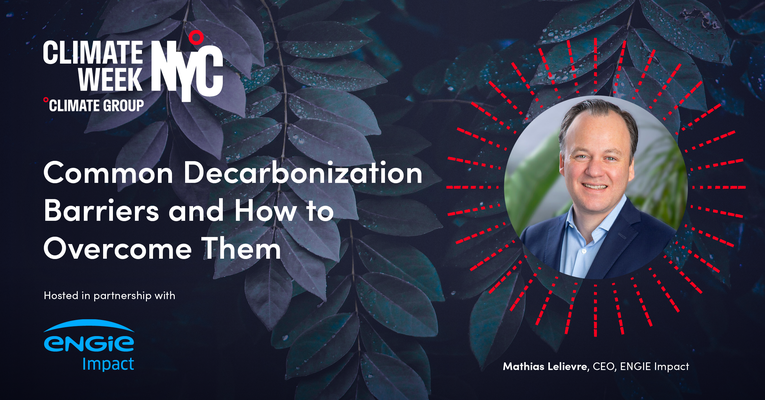1. Decarbonization begins at the leadership level. What are the main causes for lack of executive leadership, and what can an organization do about it?
It all starts with conviction. Establishing the big why for each organization is critical. There needs to be time and space for the leadership team to align around decarbonization, what it means for them, and the subject-matter education needed for them to gain that internal alignment.
Just like with any major organizational initiative, an executive team or leadership board needs to spend the time – potentially multiple sessions – to get a baseline, understand the opportunity and evaluate risk. They must look at all the angles of the problem, the good and the bad, and reach fundamental alignment.

Some organizations tend to reduce the decarbonization discussion to only be about cost, but there are tremendous opportunities around the brand, products, and the future of the organization.
Those same leaders also must be the ones who start creating the plan for implementation – otherwise progress will end with high-level, far-away commitments.
2. What are steps an organization can take to mitigate financial risks around decarbonization, or even create financial opportunities?
Data needs to inform financial decisions. By ensuring the data is as good as possible and gives a strong understanding of Scopes 1, 2 and 3, organizations can best understand the financial levers available and produce the right financial action.
Complexity can arise with geography – that some financial levers will be local, and capabilities will need to be mobilized across an organization in order to create the business case. But again, having the right data in place allows all those levers to be pulled together as part of a roadmap, driving an organization toward its financial targets.
Leadership can drive change and commitment, and need to understand the financial opportunities alongside the risks. Exploring potential pilot programs and financing options, understanding how efficiencies can come at scale, and analyzing whether it’s a cost savings compared to the current situation will help organizations mitigate financial risks when preparing to implementing their decarbonization strategy.
3. What are the most common talent gaps in sustainability expertise that organizations face, and what options are available to them?
Many organizations will have some internal knowledge and expertise around how to implement their decarbonization plans, but it isn’t something that can be 100 percent outsourced, nor is it likely something an organization is currently equipped to handle 100 percent internally.
For any talent gaps, whether specific to sustainability or within the business generally, there are external, third-party resources.
Whatever the balance of talent resources is, everyone involved has to have a full understanding of how the business works today so they can all shape how it will work tomorrow. Those with a fundamental understanding of the decarbonization levers, and how those levers may evolve in the future, allow an organization to model different options and establish the best pathway forward.
For talent, there’s also cultural change management to implement. That internal transformation may not be so different from other transformations an organization may have gone through in the past, but it still requires some specific capabilities to ensure those changes are embedded as part of the sustainability program.
There is also potential to utilize existing or new partnerships. An organization like the International Council on Mining and Metals (ICMM), for instance, can share knowledge and bring together expertise to help identify talent gaps and change management challenges.
4. How should an organization approach current limitations around both technology access and capabilities?
The first step is to have a clear idea of what the current technology limitations are. Is it risk? Is it scalability? Is it availability?

This understanding will vary company to company, and each will solve it in a different way. Some may adopt a wait-and-see approach (implementing other changes while they wait), others may start pilot programs or invest heavily in research and development. Regardless, there needs to be an awareness of technological trends, options, and scalability.
Current technological limitations are not an excuse for inaction. There can be behavioral changes, stop-gap investments in some technologies, or various partnerships that can help reduce current carbon consumption while research and development continues.
